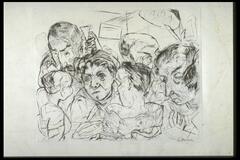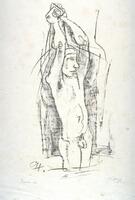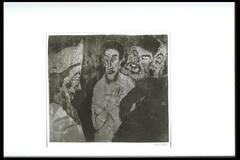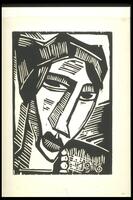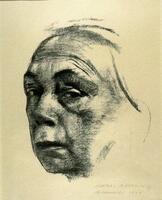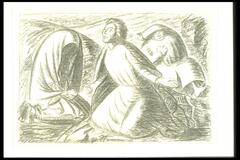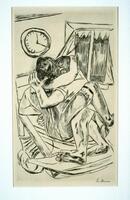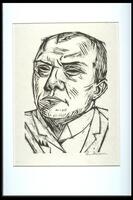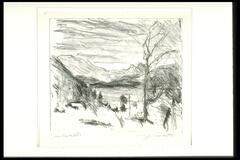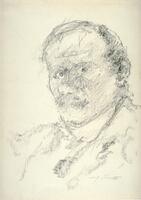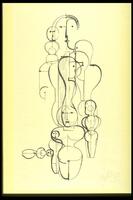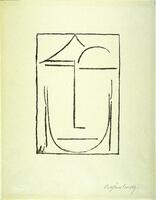Während des Nationalsozialismus in Deutschland hat die „Entartete Kunst” Ausstellung in München 1937 stattgefunden, und dies war die wichtigste Ausstellung, die das deutsche Volk mit dem nationalsozialistischen Konzept der „Entarte Kunst“ vertraut machte, aber es gab auch viele andere Ausstellungen in anderen Staedten vor dieser Ausstellung. Entartet ist ein abfälliges Wort. Mit „entarteter Kunst“ bezeichneten die Nazis Kunst, die ihren Idealen widerspraech. Diese Kunstausstellung sollte zeigen, wie Kunstwerke den Unterschied der “Rassen” zeigen. Die Ausstellung hat Kunst, die in deutschen Museen beschlagnahmt wurde, gezeigt, und die Ausstellung benutzte abfällige Kommentare und ein denunzierendes Ausstellungsdesign, um die Kunstwerke schlecht aussehen zu lassen. Besucher sollten kommen, um ihre Überlegenheit über “entartete Kunst” zu genießen. Aber viele Besucher sind aus Neugier hingegangen, und einige Besucher sind gegangen, um Kunst von ihren Lieblingskünstlern zu sehen. Die meisten Besucher zogen eigentlich die „entartete Kunst“ vor. Die Sammlung hat praktisch alle deutsche moderne Kunst ausgestellt, und sie hat auch Kunst von berühmten Künstlern wie Picasso gezeigt. Meine Sammlung stellt Kunst von Künstlern, die in München gezeigt wurden, und andere Kunst, die als “entartet” betrachtet wurde, zusammen.
14 Items in this Learning Collection
Collection Object
Collection Object
Collection Object
Collection Object
Collection Object
Collection Object
Collection Object
Collection Object
Collection Object
Collection Object
Collection Object
Copyright
All Rights Reserved
()
Self-portrait
Accession Number
1983/2.42
Title
Self-portrait
Artist(s)
Käthe Kollwitz
Artist Nationality
German (culture, style, period)
Object Creation Date
1924
Medium & Support
lithograph on paper
Dimensions
21 3/4 x 14.9 in. (55.25 x 37.94 cm);22 1/8 x 28 1/8 in. (56.2 x 71.44 cm);9 x 11 1/2 in. (22.86 x 29.21 cm)
Credit Line
Bequest of Jean Paul Slusser
Subject matter
This is one of a number of moving and powerful self-portraits Kollwitz produced throughout her career. Greatly affected by the sadness she suffered in her personal life along with the poverty and misery that surrounded her in the aftermath of World War I, this work resonates with the grief and loss she suffered after the death of her son in the war, and reveals both a sense of quiet mourning and solemn resignation.
Physical Description
Three-quarter profile view of a woman’s face
Primary Object Classification
Print
Collection Area
Modern and Contemporary
Rights
If you are interested in using an image for a publication, please visit http://umma.umich.edu/request-image for more information and to fill out the online Image Rights and Reproductions Request Form.
Keywords
Expressionism
Expressionist (style)
Figures
Portraits
head
heads (animal components)
modern and contemporary art
self-portrait
self-portraits
1983/2.42
Title
Self-portrait
Artist(s)
Käthe Kollwitz
Artist Nationality
German (culture, style, period)
Object Creation Date
1924
Medium & Support
lithograph on paper
Dimensions
21 3/4 x 14.9 in. (55.25 x 37.94 cm);22 1/8 x 28 1/8 in. (56.2 x 71.44 cm);9 x 11 1/2 in. (22.86 x 29.21 cm)
Credit Line
Bequest of Jean Paul Slusser
Subject matter
This is one of a number of moving and powerful self-portraits Kollwitz produced throughout her career. Greatly affected by the sadness she suffered in her personal life along with the poverty and misery that surrounded her in the aftermath of World War I, this work resonates with the grief and loss she suffered after the death of her son in the war, and reveals both a sense of quiet mourning and solemn resignation.
Physical Description
Three-quarter profile view of a woman’s face
Primary Object Classification
Collection Area
Modern and Contemporary
Rights
If you are interested in using an image for a publication, please visit http://umma.umich.edu/request-image for more information and to fill out the online Image Rights and Reproductions Request Form.
Keywords
Expressionism
Expressionist (style)
Figures
Portraits
head
heads (animal components)
modern and contemporary art
self-portrait
self-portraits
